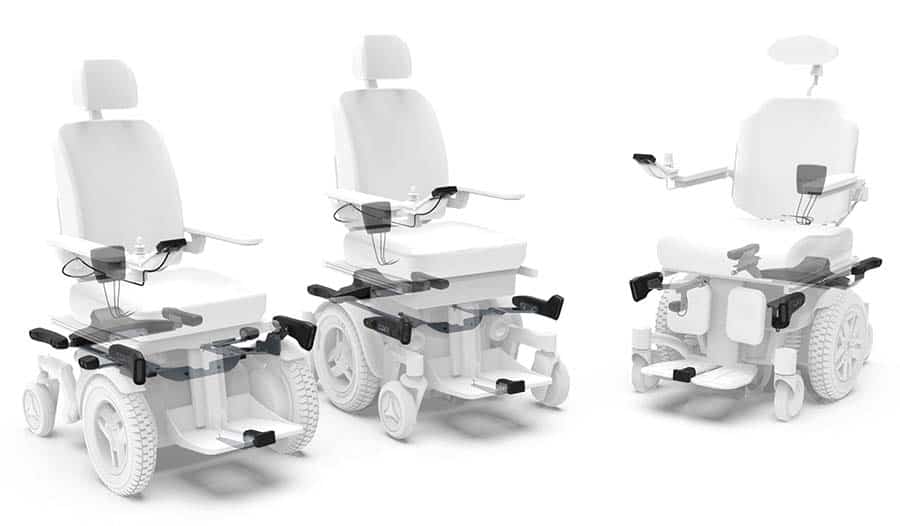Global wheelchair market forecast to hit £4.7bn by 2026 as focus turns to smart technologies

A report has predicted the global wheelchair market will be worth $6.3bn (£4.7bn) in the next six years, driven by several key demographic and technological factors across different markets.
The ‘Wheelchair Market Global Industry Analysis’ market research report from Transparency Market Research (TMR)’s report analysed some of the industry’s key players, including Invacare, Sunrise Medical, Ottobock, Pride Mobility, Karma and Drive DeVilbiss Healthcare.
Pointing out some of the different drivers of growth in markets across the world, the report suggests some of the developing trends that are taking place within the wheelchair sector, as well as emerging opportunities for players in the market.
Medical factors driving demand
Noting the increasing global ageing population, the report provides more detail regarding some of the medical conditions that are principally driving demand for wheelchairs and how these differ across regions.
Interestingly, the report suggests that the prevalence of autoimmune diseases in baby boomers is a key driver of demand for wheelchairs, particularly in the wheelchair market’s largest market, North America.
Meanwhile, lifestyle diseases and osteoporosis are also a primary contributory factor, especially in the Asia Pacific region which is seeing a rapidly growing disabled population, driven by advancements in healthcare.
In addition, the report cites increases in spinal injuries and rheumatoid arthritis as pushing demand for wheelchairs across all markets.
Embracing new technologies and innovations
TMR’s report specifically references that demand for technologically advanced wheelchairs has grown significantly across developing regions, with Asia Pacific “expected to rise at a rapid pace on the back of demand for power mobility devices” in the next six years.
One technology that receives a special mention is the emergence of smart technology, stating that “manufacturers offering smart wheelchairs that can be operated autonomously or collaboratively with the caregivers are seeing higher scope in the wheelchairs market.”
According to TMR’s analysts, this has stirred the development of “intelligent power wheelchairs.”
Over recent years, the market has seen a number of ‘smart wheelchairs’ enter the market – most notably, WHILL’s self-driving, autonomous powerchairs. Also, LUCI, a start-up based in North America, is developing a system that can be retrofitted to existing powerchairs in the market to turn them into ‘smart powerchairs.’

Helping to propel this move is a growing academic interest in healthcare and mobility, with the report noting: “The market is also receiving momentum from a growing body of multidisciplinary studies on the utility of smart wheelchairs to improve the life of disabled patient population.”
Last year, the world’s first Masters degree course designed to accelerate innovation in the disability arena launched by the Global Disability Innovation Hub.
Safety comes to the fore
As new technologies have emerged, so too has a focus on safety considerations by manufacturers, suggests the market research report.
Emphasising that most of the wheelchair market players put a recurrent focus on the safety aspect of their wheeled mobility aids, the report claims that manufacturers are leaning more on integrating their products with robotics to that end.
“A case in point is pneumatically-powered waterproof powered system in the wheelchairs market,” maintains the TMR report.
Analysing the various suppliers in the market, the report highlights that manufacturers’ approaches to product innovation have evolved, taking end-users’ and caregivers’ feedback into account at the prototype stage.
Growth in both private and institutional segments
The report reveals that developed regions of the world have enjoyed revenue gains on the back of private end-users adopting wheeled mobility products, moving away from a market largely dominated by institutional users.
According to the report, institutional users include government organisations, clinics, charities and hospitals.
While private end-users are the largest segment of the market, TMR’s research points to the institutional customer segment being promising and expected to grow through 2026 as governments of developing countries increase their initiatives to provide access to assistive devices for their populations.
To full report is available to purchase here
https://thiis.co.uk/global-wheelchair-market-forecast-to-hit-4-7bn-by-2026-as-focus-turns-to-smart-technologies/https://thiis.co.uk/wp-content/uploads/2020/06/powerchair-woman-riding.jpghttps://thiis.co.uk/wp-content/uploads/2020/06/powerchair-woman-riding-150x150.jpgNewsroomReports & ResearchSector NewsSupplier NewsTrade NewsAsia Pacific,Drive DeVilbiss healthcare,innovation,Invacare,Karma,LUCI,North America,Ottobock,powerchair,powered wheelchair,Pride Mobility,smart technology,Sunrise Medical,Transparency Market Research,wheelchair,wheeled mobility,WHILLA report has predicted the global wheelchair market will be worth $6.3bn (£4.7bn) in the next six years, driven by several key demographic and technological factors across different markets. The ‘Wheelchair Market Global Industry Analysis’ market research report from Transparency Market Research (TMR)’s report analysed some of the industry’s key...Calvin BarnettCalvin Barnettcalvin.barnett@bhta.comAuthorTHIIS Magazine

